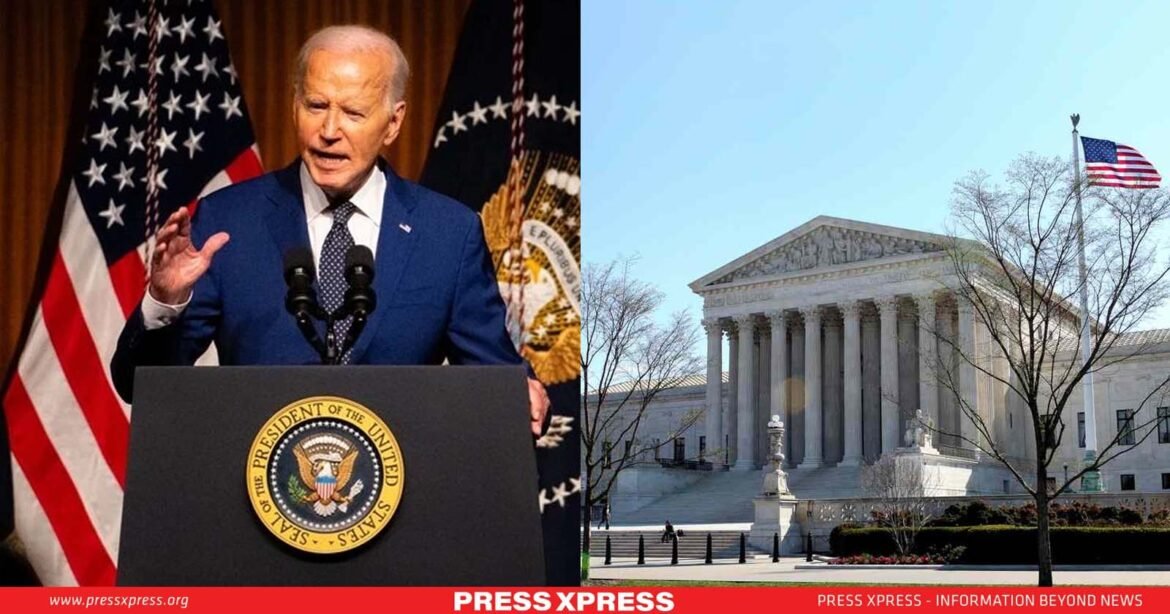Since 2016, the U.S. Supreme Court has faced a growing polarization crisis. Contentious appointments, and controversial rulings, have led to widespread dissatisfaction and increasingly partisan perceptions of the nation’s highest court.
This week, President Joe Biden proposed sweeping reforms that would dramatically alter the Supreme Court’s structure and operation. Dubbed the “No One is Above the Law Amendment,” Biden’s plan aims to address recent Supreme Court decisions, establish term limits for justices, and implement a new ethics code for the court.
Origins of the Crisis
The current legitimacy crisis can be traced back to 2016 when Senate Majority Leader Mitch McConnell refused to hold hearings for President Obama’s Supreme Court nominee, Merrick Garland, following Justice Antonin Scalia’s death. After Donald Trump’s election, Neil Gorsuch was appointed to fill Scalia’s seat, sparking accusations that Republicans had unfairly seized control of a Supreme Court position.
You can also read: EU Stands Firm with Bangladesh in Turbulent Times
Tensions escalated further with Justice Ruth Bader Ginsburg’s passing in the final months of Trump’s presidency. Trump swiftly appointed conservative Justice Amy Coney Barrett, solidifying a 6-3 conservative majority on the court.
Controversial Rulings Fuel Public Discontent
In 2022, the Supreme Court overturned Roe v. Wade in a 6-3 decision, eliminating the federal constitutional right to abortion and allowing states to restrict access severely. This ruling sparked concerns among progressives that other rights derived from substantive due process, such as access to contraception and same-sex marriage, could also be at risk.
Public opinion of the court quickly polarized. By July 2022, only 13% of Democrats held a positive view of the Supreme Court, compared to 74% of Republicans. This stark divide likely contributed to Democrats’ surprising success in the 2022 midterm elections, defying predictions of a “red wave.”
Recent rulings have further angered progressives. In 2023, the court struck down affirmative action policies in college admissions. This year, it limited federal agencies’ regulatory powers by overturning the long-standing Chevron doctrine. Most recently, the court’s decision on presidential immunity effectively derailed the criminal case against Donald Trump for his actions on January 6th, 2021.
Ethical Concerns Compound the Crisis
The legitimacy crisis extends beyond controversial rulings. In 2018, Brett Kavanaugh’s nomination process was marred by sexual misconduct allegations. More recently, Justice Clarence Thomas has faced scrutiny over his failure to disclose expensive gifts and trips from wealthy Republican donors, in violation of ethics laws.
These ethical lapses have fueled accusations of corruption within the Supreme Court. Some Democrats, like Representative Alexandria Ocasio-Cortez, have even drafted articles of impeachment against Justice Thomas.
Biden’s Three-Point Reform Plan
President Biden’s proposed reforms seek to address the court’s declining legitimacy through three main avenues:
1. The “No One is Above the Law” Amendment
This constitutional amendment aims to overturn the recent presidential immunity decision. It would establish that presidents have no immunity for official acts that could be considered criminal.
2. Term Limits for Justices
Biden supports a system where Supreme Court justices would serve 18-year terms instead of lifetime appointments. Every two years, the sitting president would appoint a new justice to the court.
3. Binding Ethics Code
The president calls for implementing a mandatory ethics code for Supreme Court justices. This would likely restrict their political activities and increase transparency around gifts and potential conflicts of interest.
Challenges to Implementation
While these proposals represent the most substantial changes to the Supreme Court in decades, their chances of becoming reality are slim. Constitutional amendments require ratification by three-quarters of state legislatures, an extremely high bar in today’s polarized political climate.
The Strategic Value of Biden’s Proposal
Given the improbability of these reforms passing, why is Biden putting them forward? The answer lies in potential electoral advantages for Democrats.
Public opinion data shows the Supreme Court’s approval rating at near-record lows, with an unfavorability score of 56%. By proposing these reforms, Biden positions the Democratic Party as responsive to widespread discontent with the court’s current direction.
This strategy proved effective in the 2022 midterms, where abortion rights became a key motivating issue for Democratic voters following the Dobbs decision. By keeping Supreme Court reform in the spotlight, Biden aims to replicate this success in the upcoming presidential election.
The Future of the Supreme Court
The current composition and ages of the justices suggest that the next president will likely have the opportunity to appoint at least two new Supreme Court justices. This reality adds urgency to Biden’s reform proposals and underscores the high stakes of the November election.
Vice President Kamala Harris has been vocal in supporting abortion rights, positioning herself as a strong communicator on the risks of an even more conservative court. Democrats hope this message will resonate with both independent voters concerned about the court’s rightward shift and progressives eager to protect hard-won rights.
Conclusion
By drawing attention to potential Supreme Court appointments and the need for reform, Biden and the Democrats aim to make the court’s future a central issue in the upcoming election. If successful, this strategy could prove highly effective in motivating voter turnout and swaying undecided voters.
As the nation grapples with a deeply polarized political landscape, the debate over Supreme Court reform highlights the complex interplay between judicial independence, political power, and public trust in democratic institutions. While Biden’s proposed reforms face significant hurdles, they have reignited important conversations about the role and structure of the nation’s highest court in the 21st century.
pre


